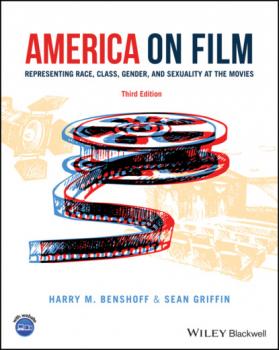John Wiley & Sons Limited
Все книги издательства John Wiley & Sons LimitedNew Pandemics, Old Politics
New Pandemics, Old Politics explores how the modern world adopted a martial script to deal with epidemic disease threats, and how this has failed – repeatedly. Europe first declared ‘war’ on cholera in the 19th century. It didn’t defeat the disease but it served purposes of state and empire. In 1918, influenza emerged from a real war and swept the world unchecked by either policy or medicine. Forty years ago, AIDS challenged the confidence of medical science. AIDS is still with us, but we have learned to live with it – chiefly because of community activism and emancipatory politics. Today, public health experts and political leaders who failed to listen to them agree on one thing: that we must ‘fight’ Covid-19. There’s a consensus that we should target individual pathogens and suppress them – rather than address the reasons why our societies are so vulnerable. Arguing that this consensus is mistaken, Alex de Waal makes the case for a new democratic public health for the Anthropocene.
Applied Univariate, Bivariate, and Multivariate Statistics
AN UPDATED GUIDE TO STATISTICAL MODELING TECHNIQUES USED IN THE SOCIAL AND BEHAVIORAL SCIENCES The revised and updated second edition of Applied Univariate, Bivariate, and Multivariate Statistics: Understanding Statistics for Social and Natural Scientists, with Applications in SPSS and R contains an accessible introduction to statistical modeling techniques commonly used in the social and behavioral sciences. The text offers a blend of statistical theory and methodology and reviews both the technical and theoretical aspects of good data analysis. Featuring applied resources at various levels, the book includes statistical techniques using software packages such as R and SPSS®. To promote a more in-depth interpretation of statistical techniques across the sciences, the book surveys some of the technical arguments underlying formulas and equations. The thoroughly updated edition includes new chapters on nonparametric statistics and multidimensional scaling, and expanded coverage of time series models. The second edition has been designed to be more approachable by minimizing theoretical or technical jargon and maximizing conceptual understanding with easy-to-apply software examples. This important text: Offers demonstrations of statistical techniques using software packages such as R and SPSS® Contains examples of hypothetical and real data with statistical analyses Provides historical and philosophical insights into many of the techniques used in modern social science Includes a companion website that includes further instructional details, additional data sets, solutions to selected exercises, and multiple programming options Written for students of social and applied sciences, Applied Univariate, Bivariate, and Multivariate Statistics, Second Edition offers a text to statistical modeling techniques used in social and behavioral sciences.
A History of Roman Art
The new edition of the leading textbook on Roman art, updated with new images and expanded geographic and cultural scope A History of Roman Art is an expansive survey of the painting, mosaic, sculpture, decorative arts, and architecture of ancient Rome. This acclaimed textbook provides a fully-illustrated narrative history of Roman art that spans a millennium, from the early origins of Rome to the era of Emperor Constantine. Interwoven throughout the text are themes of Rome's cultural inclusiveness and the importance of art in promoting Roman values, helping students understand how diverse cultures contributed to Roman life. Accessible, chronologically-organized chapters provide numerous examples of the arts, their cultural and historical context, descriptions of artistic techniques, and writings by ancient authors—enabling students to develop a rich appreciation of art’s importance in the Roman world. Now in its second edition, this market-leading textbook features thoroughly revised content throughout. Additional images and excerpts from literary sources are complemented by new historical discussions of metalwork, carved gems, glass, and sarcophagi. This edition features more maps and illustrations, in-depth analysis of iconography, greater emphasis on the types of objects used to decorate the lives of ordinary Romans, expanded coverage of freedmen and women as artists, subjects, and patrons, and much more. A number of works that represent popular art have been added. That is, art in the everyday Roman world, rather than just the large scale works of sculpture and architecture of elite patrons. It also reveals patterns of artistic workshops, trade, and social and economic networks. Additionally, this edition takes into account new approaches in scholarship. This comprehensive textbook: Provides a thorough introduction to Roman art history featuring more than 400 high quality images and illustrations Includes a full set of pedagogical tools, such as historical timelines, key term definitions, and updated references and further reading suggestions Offers “Scholarly Perspective,” “A View from the Provinces,” “More on Myth,” and “Art and Literature” textboxes in each chapter Includes a companion website containing PowerPoint slides and additional instructor resources A History of Roman Art , Second Edition is an ideal primary o









